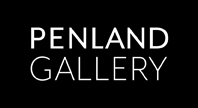
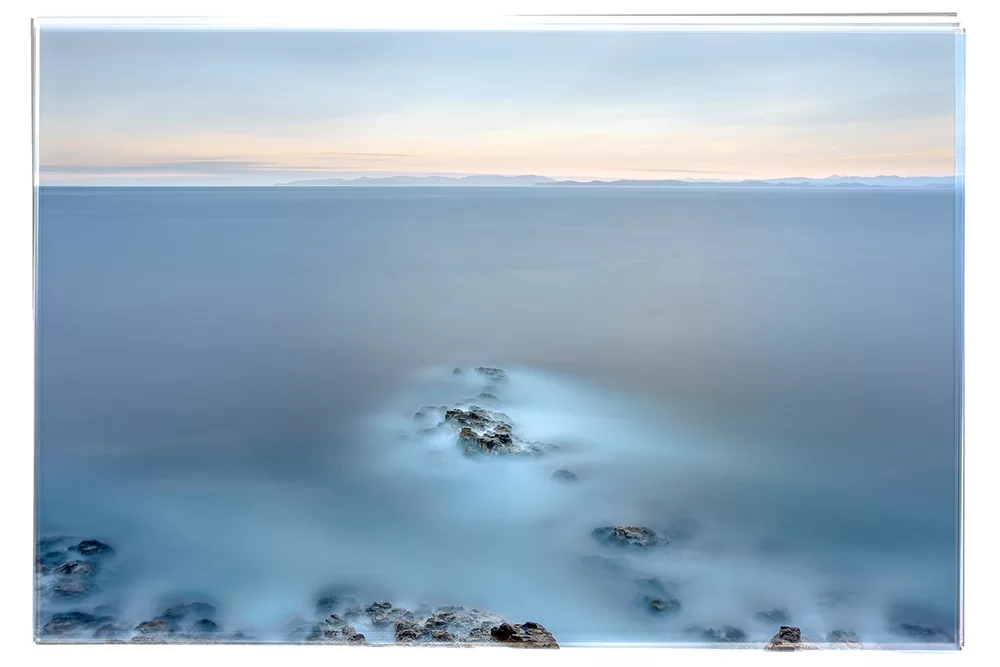
DAN BAILEY
MARIANNE DAGES
MORGAN HILL
ERICA IMAN
KENTO SAISHO
AMY TAVERN
Time as an abstraction—a moment or an eternity—visualized by six artists.
…and I look upon time as no more than an idea, and I consider eternity as another possibility….(1)
The endeavor to hold time is an abstract undertaking. Capturing a moment in memory or comprehending the notion of forever, is a fragile pursuit. Time moves through and around us without boundaries, not waiting for our consideration. To witness, to train our attention, to absorb and embed the moment, is our way of holding time. Then our challenge is how to give it form and substance – a photograph, a journal entry, a memento – and add it to the figurative bank of recollection.
From this collective place, artists reconstruct what they have witnessed. They create, in material form, the holding of their experiences. When successful, the viewer is aware of the materiality, the presence of the artist, and the breadth and depth of what has been gathered in the making of the work. We sense what is embedded and not seen.
Dan Bailey’s series Observatories planted the curatorial seed of this exhibition and heightened an awareness of how time is filtered through an artistic practice. His images suggest a larger context and question our sense of time. The Observatories images present an alternative to a typical cursory, anthropocentric gaze and snapshot.
“A driving force of the project”, Dan states, “ is to record the natural world at a duration that is not geared to humans. Though difficult or even impossible to achieve, an intent is to depict landscape where even the lifespan of a tree or the impact of humans is too short to be seen. Those ephemeral events disappear into a blur. Images of both day and night are recorded equally to counter the bias of diurnal vision. The desire is to observe the landscape as it exists over thousands of years. These long views complement the conventional practice of slicing time into smaller and smaller units to dissect an event.”
The six artists in this exhibition have made the act of holding time tangible through unique and deeply resonating works that carry memory and intention.
We need not stop the wheel. But rest in the axis and watch the world go by. (2)
Kathryn Gremley
Penland Gallery Director
1. Mary Oliver, When Death Comes, 2. Unknown poet
For a full list of works in the exhibition HERE
To inquire about works in the exhibition contact us at 828.765.6211 or via email at gallery@penland.org
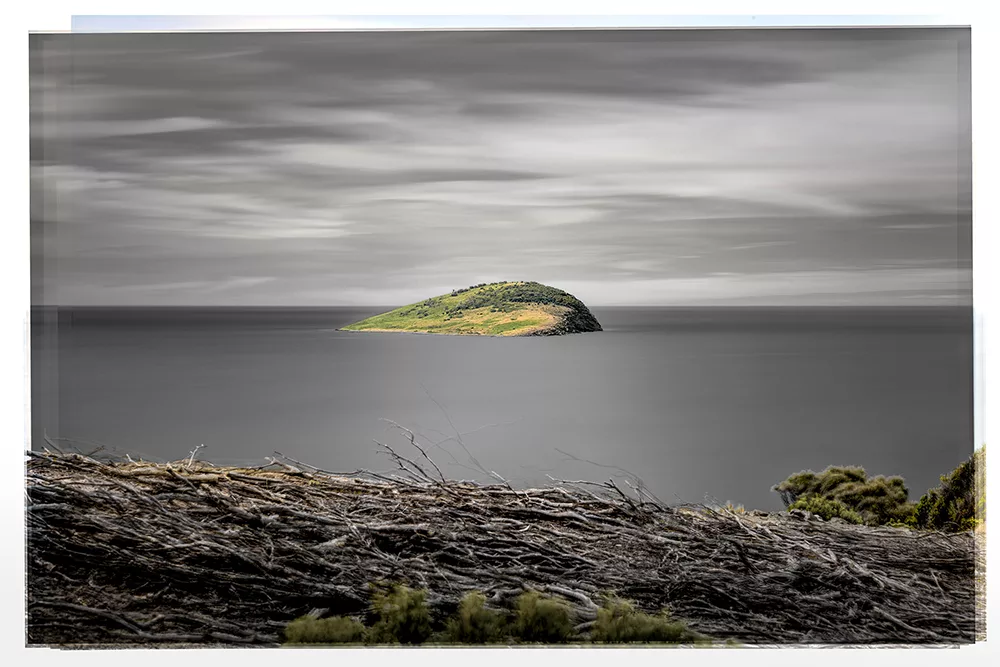
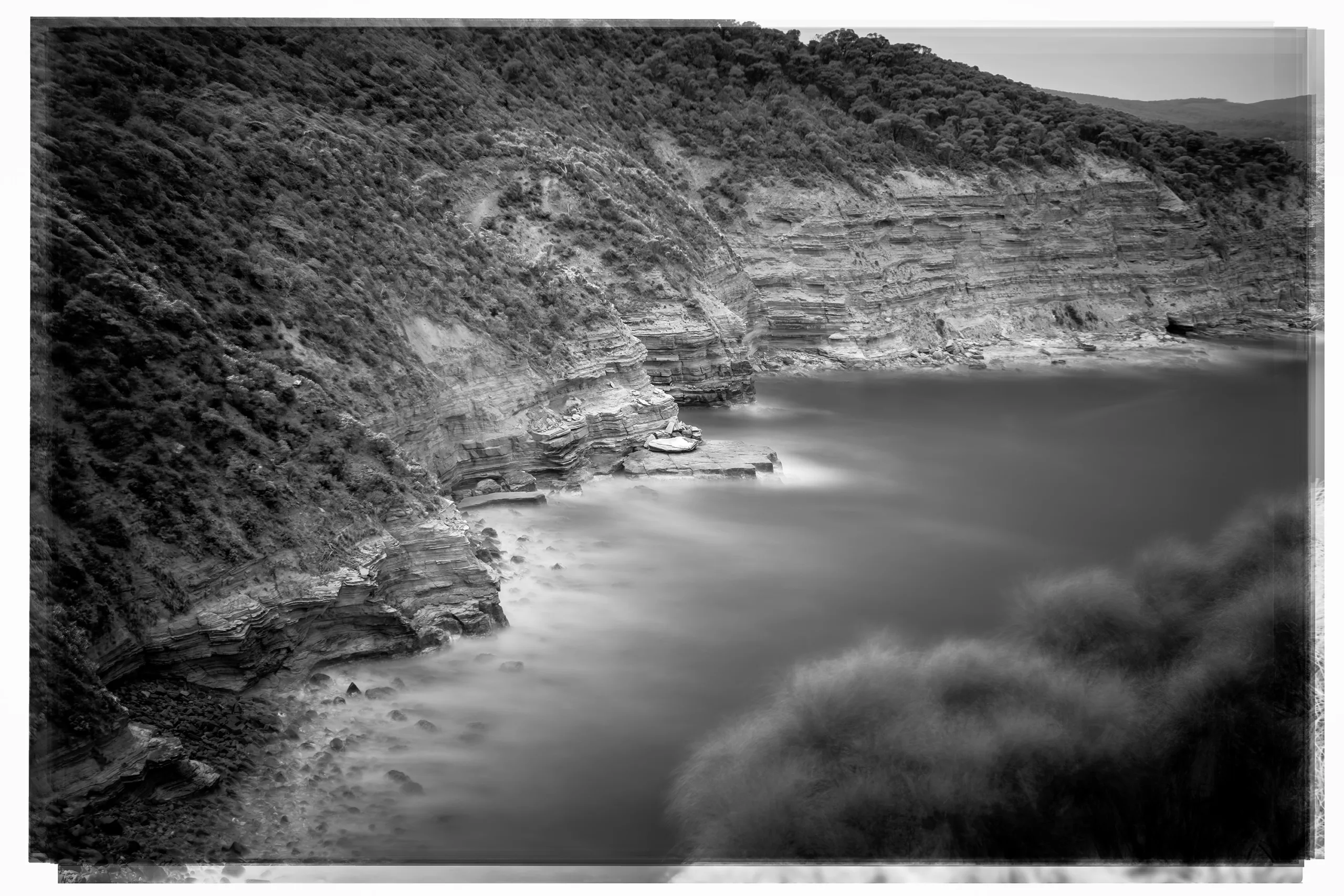
DAN BAILEY
Observatories renders an expanded sense of time in depicting landscapes. It uses a slower rhythm to observe, reflect, and record images – one that is more on a geologic time scale. Observatories presents an alternative to a typical cursory, anthropocentric gaze and snapshot.
A driving force of the project is to record the natural world at a duration that is not geared to humans. Though difficult or even impossible to achieve, the intent is to depict landscape where even the lifespan of a tree or the impact of humans is too short to be seen. Those ephemeral events disappear into a blur. Images of both day and night are recorded equally to counter the bias of diurnal vision. The desire is to observe the landscape as it exists over thousands of years. These long views complement the conventional practice of slicing time into smaller and smaller units to dissect an event.
For the series Observatories, camera stations are constructed in specific locations with a targeted view. Over periods of months and years, the cameras record long exposures at different times of day or night and at different wavelengths of light. Much as a painter might create an image over a period of days or weeks, these slow exposures are layered on top of each other and blended to give a sense of long durations. The images also derive from data visualization techniques where different wavelengths are used to emphasize important visual elements.
The Observatories series is ongoing. Many of the camera stations are still in use, and these images will change as more data and layers are added. The first series of Observatories was completed in 2018 at Windgrove, Tasmania, and featured recording and simulating two-month exposures of rugged coastal landscapes and skies. Preparation of a second series in the American Southwest had started, but it was curtailed by the pandemic. A third series of Observatories is underway in western North Carolina.
In addition to layered prints as a finished work, many sequences from a camera station can be formed as a time-lapse video. This was explored in the 9 ½ minute looping video Dream Prayer Observatory where the images complement a solo violin composition by Linda Dusman.
Link to Dream Prayer Observatory Video
MARIANNE DAGES
Rain Words is a mirrored reproduction in its entirety (and in blue) of Word Rain, Madeline Gins’ masterwork of experimental fiction.* Rain Words is a reflection on and of that book; conceived, printed, and bound by Marianne Dages. In Rain Words, Dages’s interventions act as a prism through which the original book’s contents are read and transformed. Word Rain was printed without page numbers; in Rain Words, Dages changes the structure, subtly rearranging the pages within. Word Rain included photographic images of fingers handling the pages; Dages adds images of her own hands throughout. Rain Words is read only by mirror, and therefore encourages the reader to gaze upon themselves in the process. The cover image of Word Rain shows a mysterious book, a book not quite like the one presented to its reader. With Rain Words, Dages has created a looking-glass for the reader to step through.
*Gins, Madeline. Word Rain. Grossman Publishers, 1969.
Rabbit. Rabbit. Regret. is a book about a sleeping magician named Solomon. The book begins in a dream along the shores of a river and Solomon travels from dream to dream, followed by three recurring words. Rabbit. Rabbit. Regret. until the river turns to dust. The book describes the feeling of being unable to wake up from a series of disconnected dreams. Its themes include the structure and dissolution of language, mirrors and reflections, spirit doubles, call and response writing, and dream worlds.
The imagery in the book includes heavily distorted and reproduced images of landscapes and objects from the sacred site of Delphi and woven cloth. On the cover is a halftone reproduction of an old Polaroid photograph.
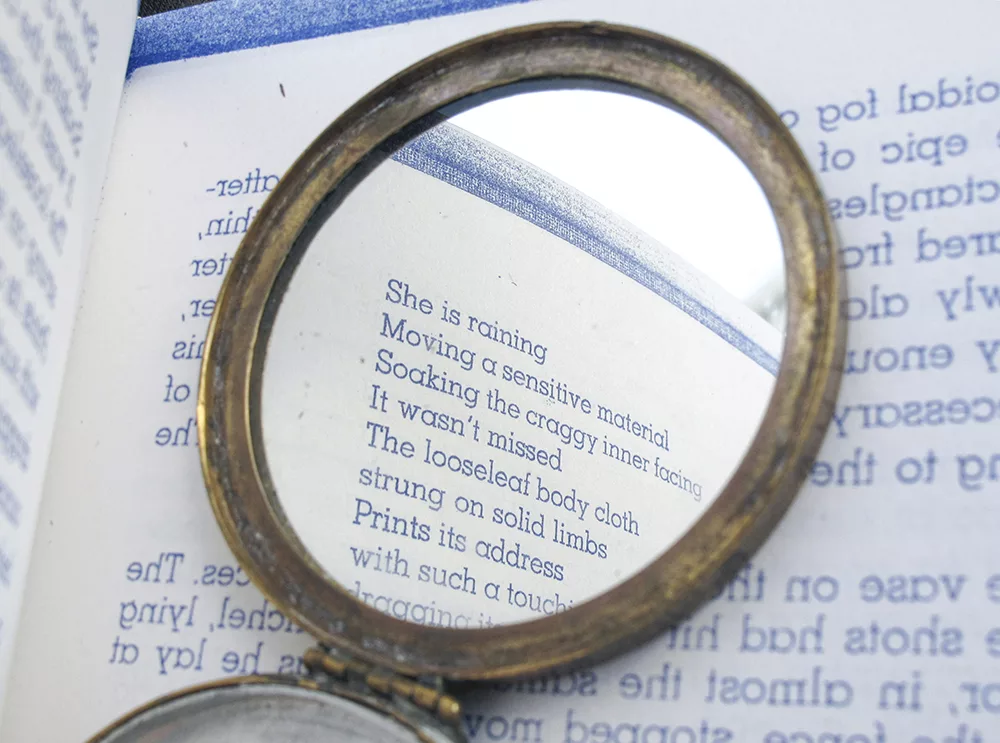
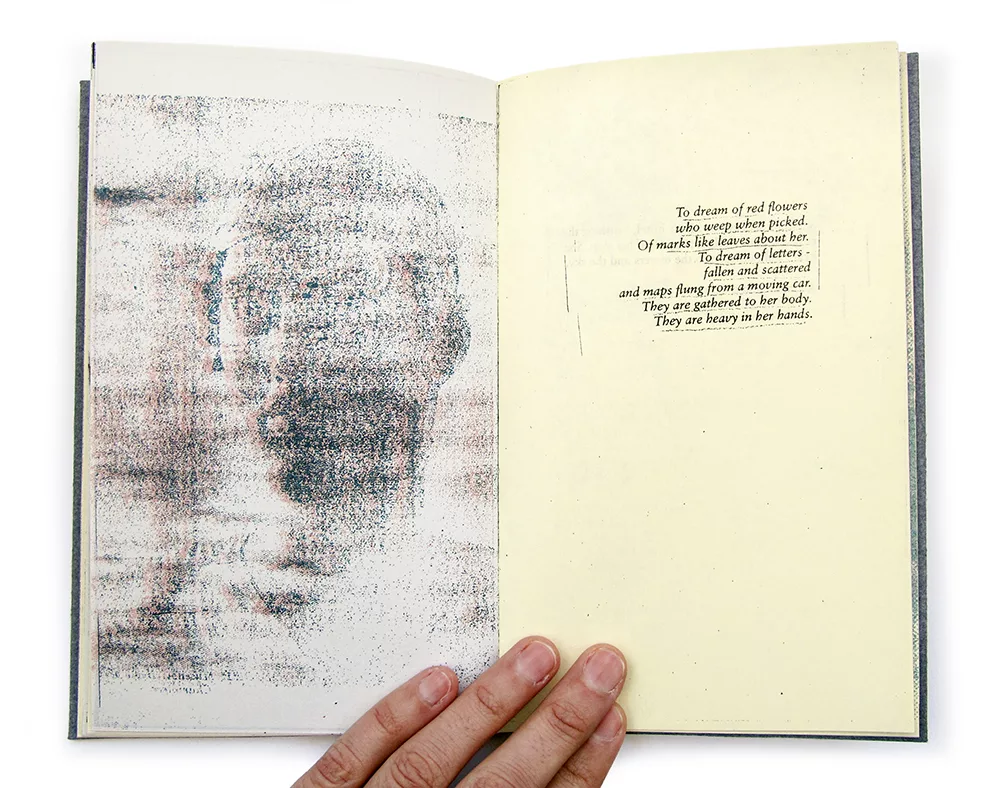
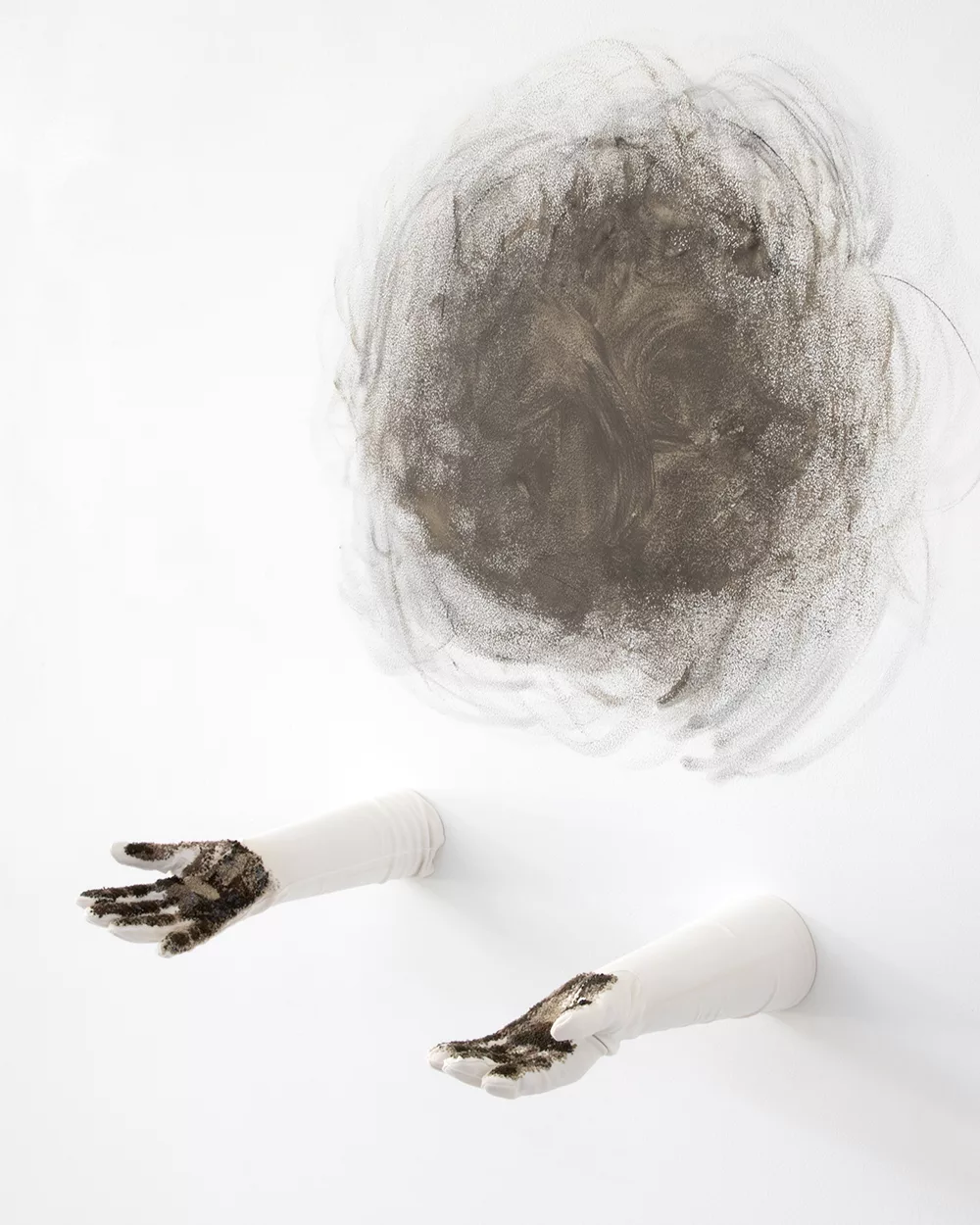
MORGAN HILL
Growing up in Arkansas, I modeled myself after the women in my life. It was important to me to make thoughtful choices about who I would be and how I would present myself. I balanced between making choices based on the external expectations I felt from others and the expressions I knew I carried within.
Challenges and profound transformation have prompted me to grapple with, mourn, and celebrate my evolving identity. With this change has come intentionality.
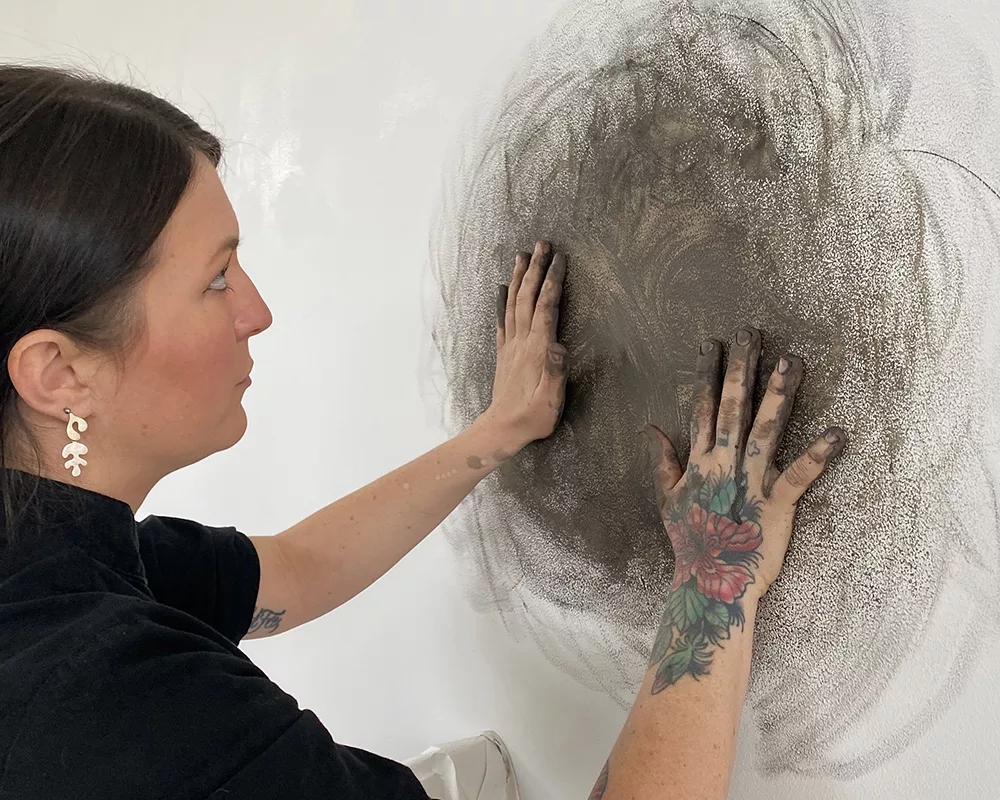
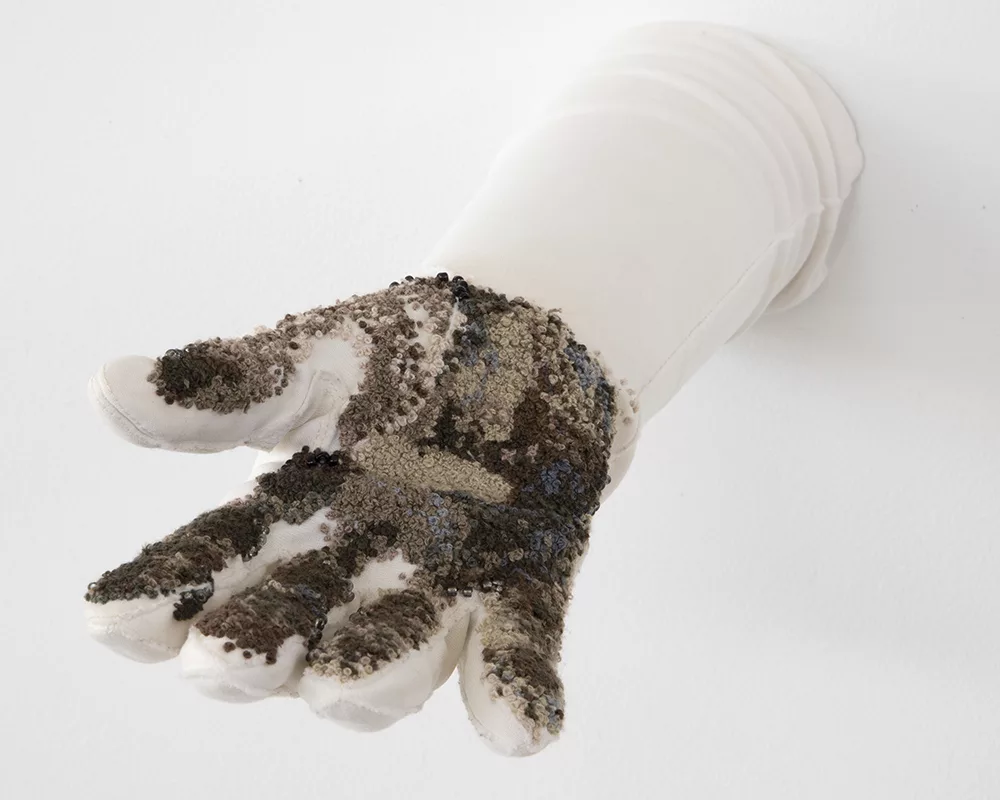
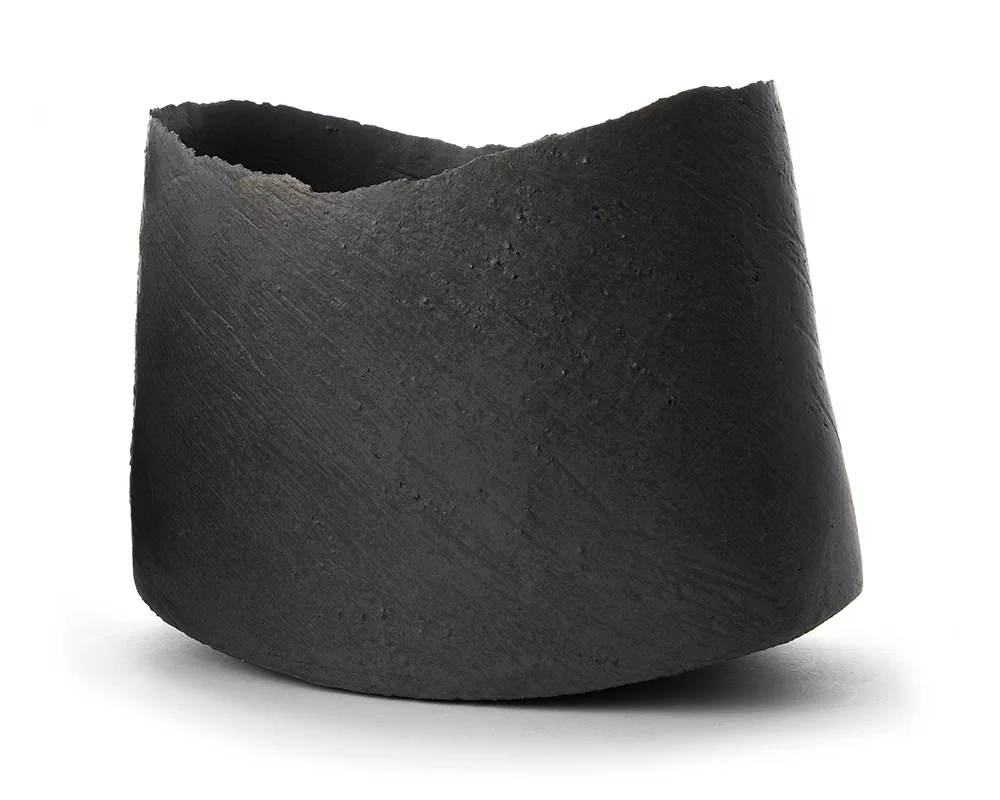
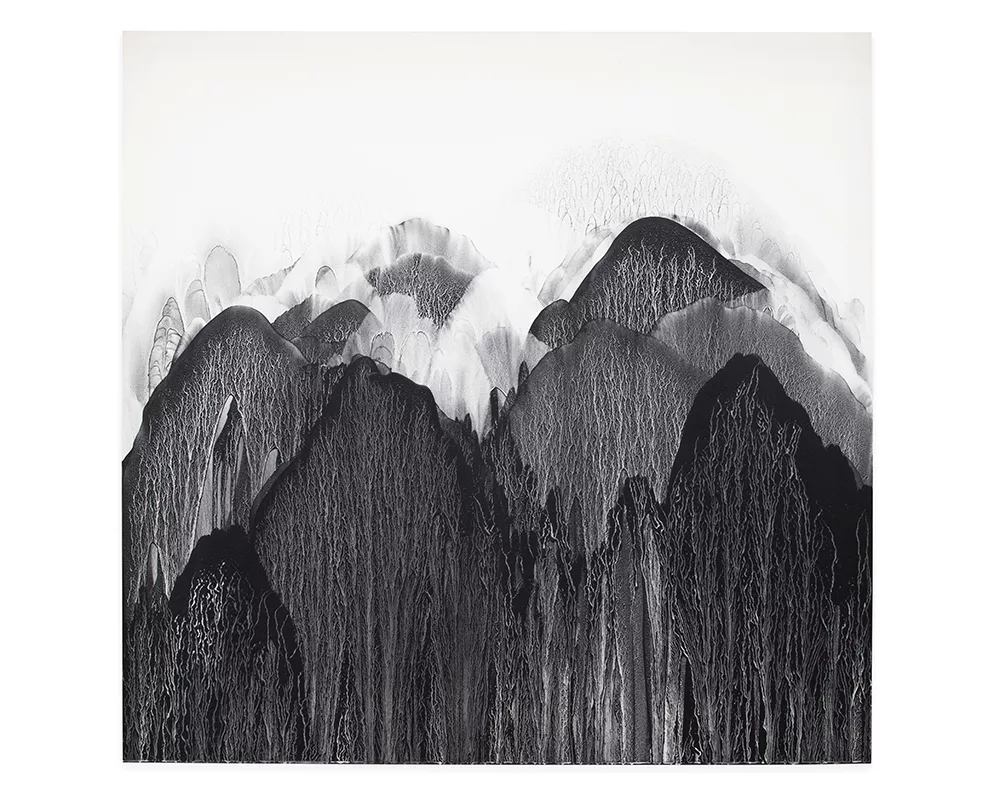
ERICA IMAN
This body of work has been driven by years of material and process research and experimentation, a result of my pursuit to find forms and surfaces that resonate beyond materiality and object. The work is based on natural processes and raw earth materials. I work intuitively while creating the pieces, responding to the form, surface, and overall feel, ripping at edges and emphasizing natural cracks. Many of my techniques come from mimicking nature’s processes such as freeze and thaw, extreme moisture and drought, and erosion. I hope to find and emphasize the beauty and subtlety in the raw materials’ inherent properties.
The paintings are created using the same powdered black iron oxide that is used in some of my glazes. The iron is mixed with varying proportions of water and poured onto an archivally primed panel and sealed. The black iron naturally branches, creating fractal-like details in the work. The texture, line quality, form, and edge are similar in feel to my ceramic work, and I aim to create a similar sense of atmosphere. Intuition and an inner, centered emotion both play a large role during the creation of my work. I push back and forth between masculine and feminine, raw and refined; the exuberance of traveling to a foreign land, and the inner clarity and resonance of simply being.
I am drawn to a sense of timelessness, the ancient story of a stone, a glacier, or cracked desert earth, which I find helps ground my idea of existence beyond the constructs of human creation. My work helps locate and orient me in the world. They are way posts, markers, guides, fragments, or cairns for exploring the essence of our physical and inner landscapes.
KENTO SAISHO
Working with steel, I create objects, vessels, and contemporary artifacts. My practice harnesses and pushes steel’s limitless capacity for transformation. At high temperatures, steel can be as soft, malleable, and tactile as clay, and through this property, I stack, coil, and shape metal to create textured and organic forms. These forms are then patched and welded together and are subsequently burnt, abraded, painted, exposed to acids and patinas, or sometimes left bare.
My work often references objects from antiquity: primal objects and vessels from the past – fragments that we project meaning onto. Through interrogating the potential for new expressions in metal, I want to expand the language of the material and expand the field for the contemporary vessel in steel.
ARTIST BIO LINK
For a complete list of KS works in the exhibition – HERE
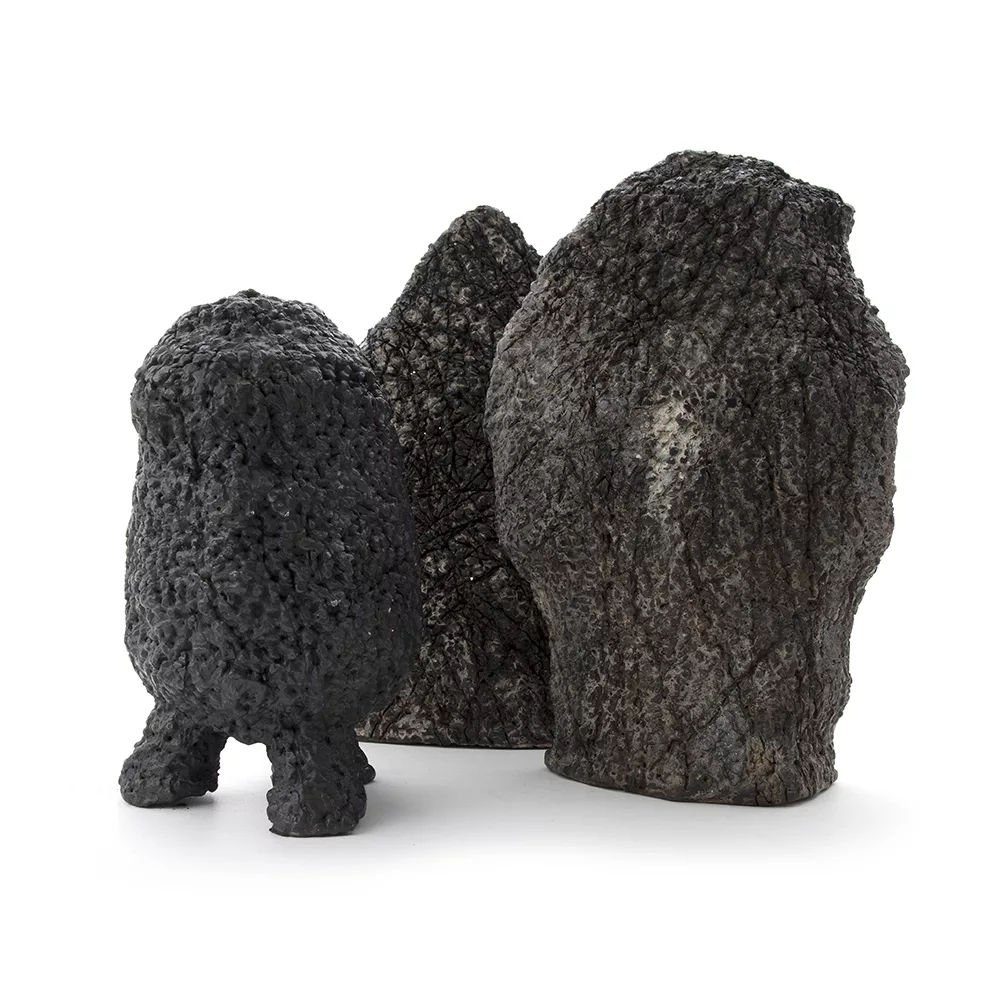
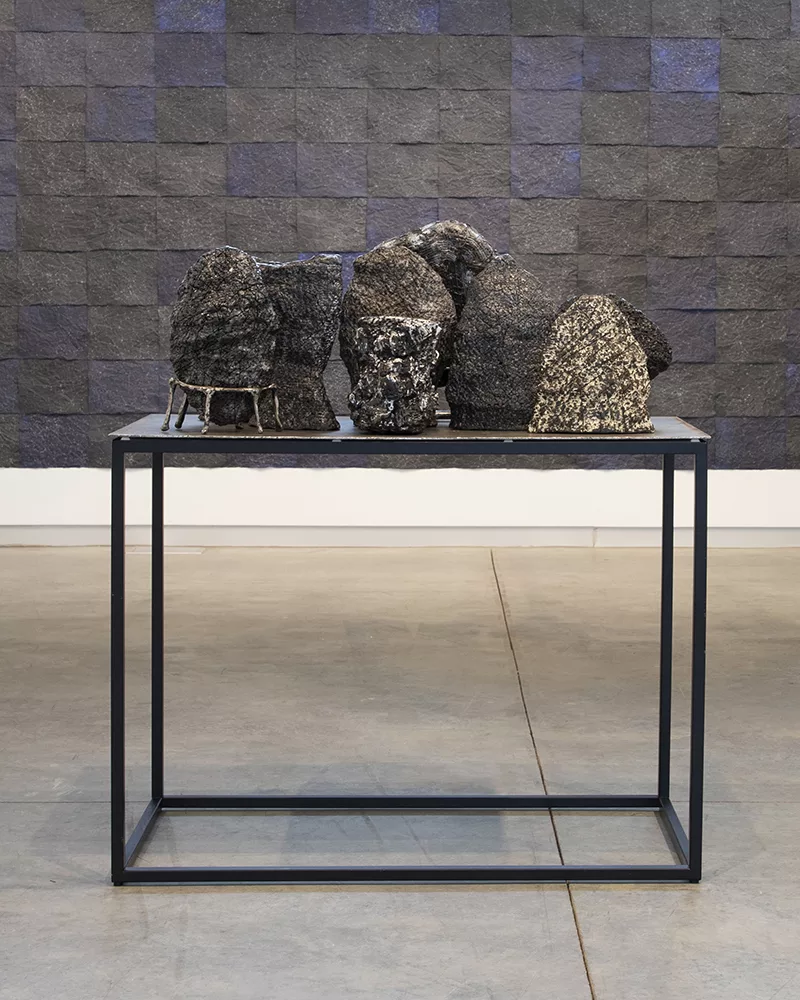
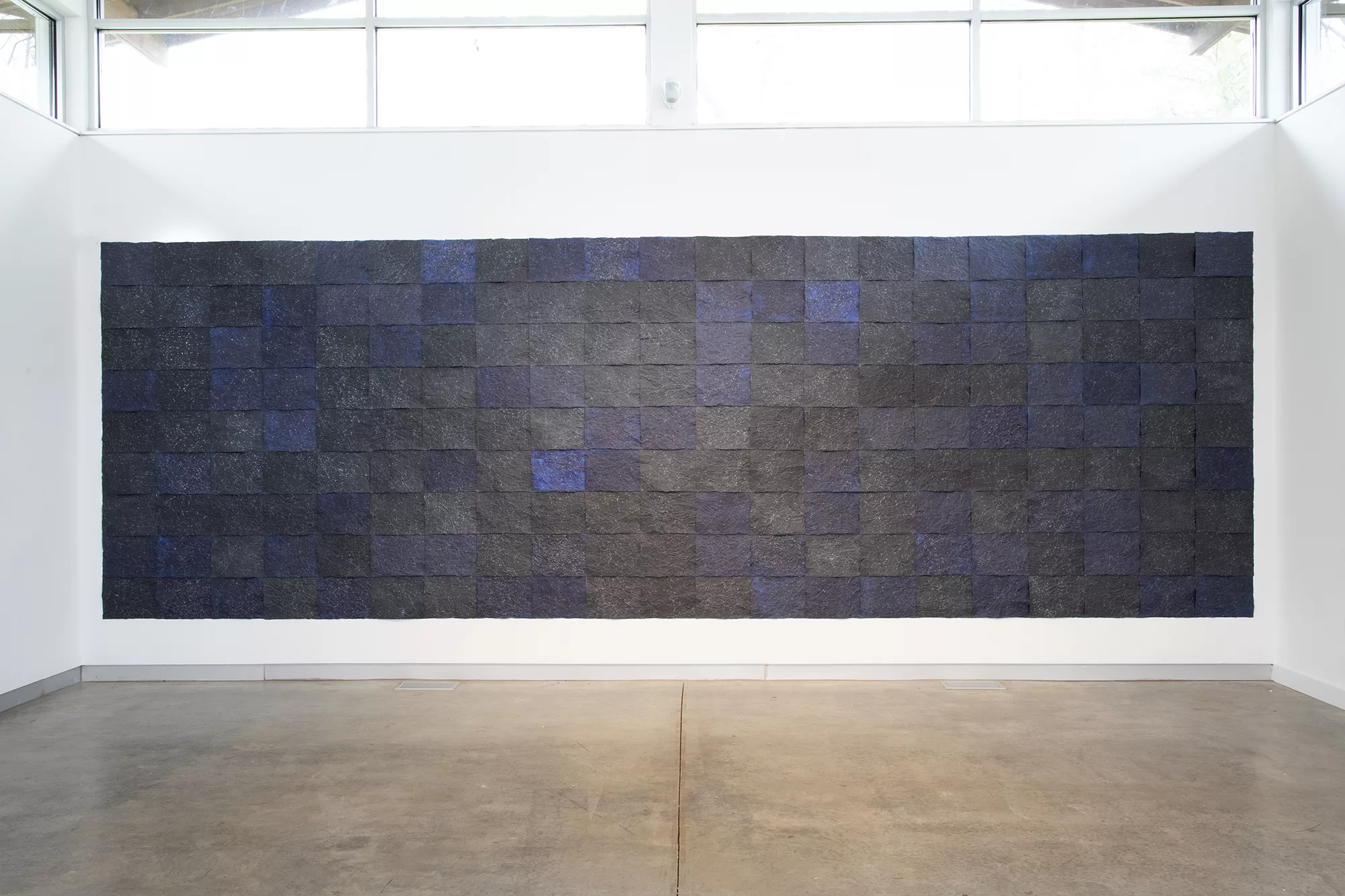
AMY TAVERN
My work centers on an investigation of place and my relationship to it. I engage with my surroundings through direct experiences, taking walks, and observing. I collect information, deliberately and subconsciously, and archive it in the form of photographs, found objects, writing, and recollections. I translate this information through mark-making, paper manipulation, and layered imagery.
Using a variety of traditional and exploratory techniques, I make works that convey imaginative landscapes, transitional spaces, and the passing of time. I work minimally, relying on order and repetition to guide me as I activate my process with chance and performative actions. Line creates pathways between what I observe and myself, and abstraction allows me to express emotional states. My intention is to deeply understand my connection to the world around me beyond what is initially seen.
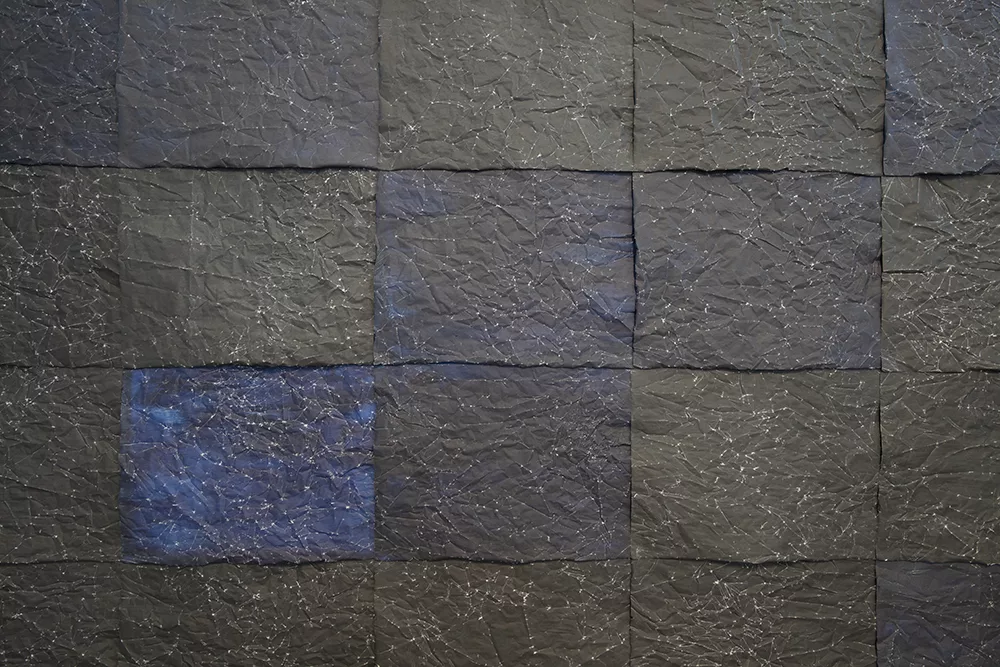
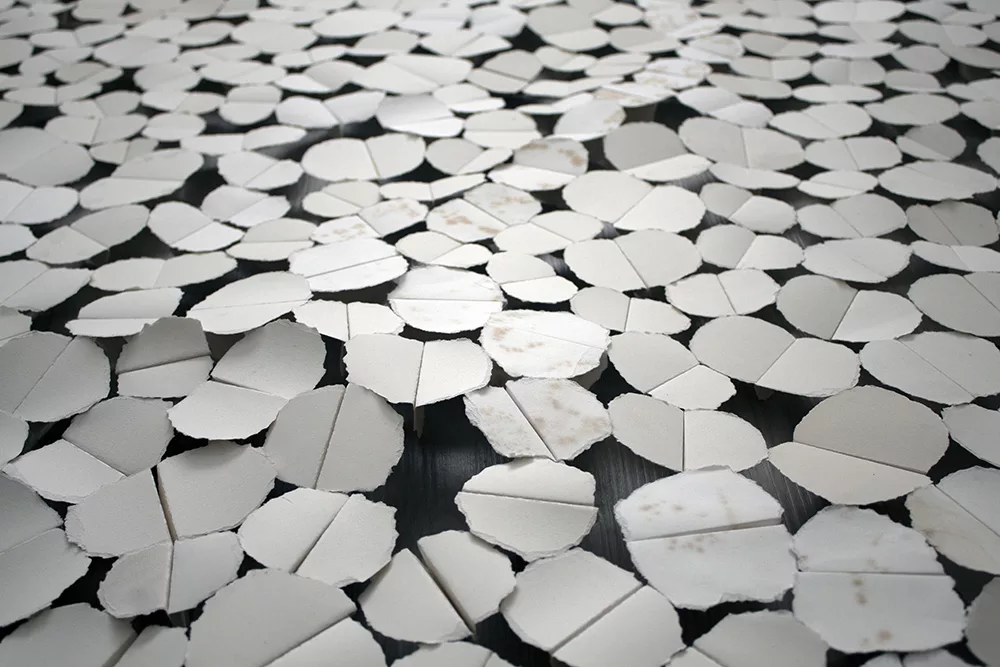
For a full list of works in the exhibition HERE
To inquire about works in the exhibition contact us at 828.765.6211 or via email at gallery@penland.org


